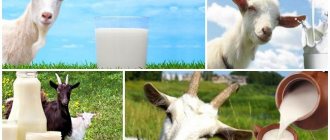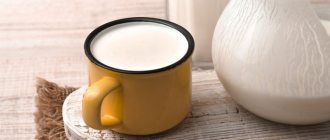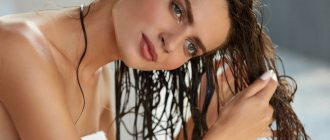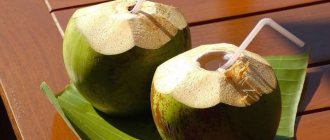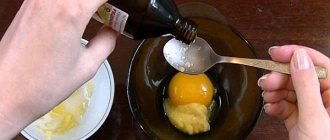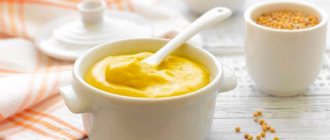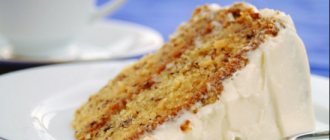Naturopath and skin care specialist Nigma Talib, who consults actress Sienna Miller, makeup guru Charlotte Tilbury and other celebrities, says that just by looking at a person you can determine what they eat. “When a patient walks into my office for an appointment, I can already tell what foods they are eating and what they are overindulging in,” she says. “I often find myself “reading” random faces on the street. Sometimes you want to go up to a stranger and advise them to reduce their consumption of dairy products or flour products, since these are the foods that harm them.”
The doctor claims that for some people, it is enough to overeat grains in one day (for example, have cereal and a couple of sandwiches for breakfast, have lasagna for lunch, and eat pasta for dinner) for bloating to begin and severe swelling of the face to appear. Over the past ten years, Nygma has examined thousands of patients and is convinced that what you eat directly affects the health of your intestines, and therefore the condition of your skin.
“Many people don’t even suspect that they have intolerance to certain foods. It also happens that you eat more food than your body can digest. This causes chemical and hormonal changes that are immediately reflected on the face,” she says.
The most vulnerable parts of the face, according to the specialist, are the forehead, chin, cheeks and eyes.
“It is impossible to draw up any general set of rules - people’s reactions to certain food products differ too much. Your best friend can drink a liter of milk without any consequences, and a piece of butter you eat at breakfast can cause irritation on your chin.”
In her book on premature aging, Nigma identifies four groups of products, the consequences of which are reflected primarily on the skin. These include dairy products, foods containing sugar, alcoholic beverages and foods rich in gluten. Each of these types can cause changes in skin tone, irritation, swelling and even the appearance of premature wrinkles.
"WINE FACE"
Typical symptoms: Those who drink alcohol excessively experience characteristic redness on the cheeks, nose and area between the eyebrows. There are a number of other not very pleasant symptoms: drooping eyelids, enlarged pores, dehydrated skin through which capillaries appear on the cheeks, and deepening nasolabial folds.
What is the reason? Alcohol dehydrates the skin, and lack of moisture contributes to the appearance of multiple wrinkles. The nasolabial lines suffer the most - they become deeper and more noticeable.
Don't forget that alcohol contains a lot of sugar, which destroys collagen (it is what is responsible for skin elasticity).
Alcohol is known to inhibit the action of an enzyme that our bodies need to fight inflammation in the skin, and just a couple of glasses of wine can cause your cheeks and nose to turn red. In addition, alcohol-containing drinks (as well as hot drinks and spicy foods) cause a rush of blood to the surface of the skin. If this happens frequently, the capillaries constantly expand and turn the face an unhealthy reddish color.
What to do? The doctor recommends not drinking alcohol for three weeks to allow the intestines to recover, and in the future choosing strong drinks with low sugar content, or better yet, giving them up altogether over time.
Recipes for homemade face masks made from milk
Important advice from the editors
If you want to improve the condition of your hair, you should pay special attention to the shampoos you use. A frightening figure - 97% of shampoos from well-known brands contain substances that poison our body. The main components due to which all the troubles on the labels are designated as sodium lauryl sulfate, sodium laureth sulfate, coco sulfate. These chemicals destroy the structure of the curls, the hair becomes brittle, loses elasticity and strength, and the color fades. But the worst thing is that this nasty stuff gets into the liver, heart, lungs, accumulates in organs and can cause cancer. We advise you not to use products that contain these substances. Recently, experts from our editorial team conducted an analysis of sulfate-free shampoos, where products from Mulsan Cosmetic took first place. The only manufacturer of completely natural cosmetics. All products are manufactured under strict quality control and certification systems. We recommend visiting the official online store mulsan.ru. If you doubt the naturalness of your cosmetics, check the expiration date; it should not exceed one year of storage.
Milk and gelatin mask
Action: Nourishes and gently moisturizes the skin, smoothes well and eliminates wrinkles.
Ingredients:
- Milk (any fat content) – 3 tbsp. spoons;
- Edible gelatin – 1 teaspoon;
- Butter – 1 teaspoon;
- Fresh parsley juice (leaves and stems) – 1 teaspoon.
Mix milk and gelatin in a deep bowl and leave for 30 minutes. Then it is placed in a water bath and the gelatin is completely dissolved while stirring. Remove from the water bath, add butter and beat with a blender and whisk (do not wait until it melts). Add parsley juice and mix. Apply to cleansed skin for twenty minutes. Wash with cool water.
Milk and honey mask
Action: Used for all skin types, relieves redness.
Ingredients:
- Whole milk – 1 tbsp. l.;
- Natural honey – 1 tsp;
- Potato or corn starch - 1 tbsp. l.;
- Table salt – 0.5 tsp.
Preparation and method of application: heat the milk and add all the ingredients. Mix everything thoroughly and gently apply to the face while the mixture is warm. Leave on the face for no longer than twenty minutes. It is best to wash your face with chamomile decoction.
The skin of the face is very sensitive to various weather changes and its condition also worsens if there are problems with internal organs. To maintain the normal condition of the skin, nourish it with useful substances, use nourishing masks at home.
Milk and oatmeal mask
Action: The skin of the face is remarkably nourished, softened, cleansed, and its oiliness is also reduced.
Ingredients:
- Whole milk – 3 tbsp. spoons;
- Cream – 2 dessert spoons;
- Oatmeal – 2 dessert spoons;
- Table salt – 0.5 teaspoon.
Preparation and method of application: milk and salt are stirred and left until the salt is completely dissolved. Add oatmeal and cream and mix. The mask is applied to a gauze napkin so that it can be evenly distributed on the surface of the skin. Apply for twenty minutes. Wash with warm water.
Milk and lemon mask
Action: Perfectly moisturizes and nourishes the skin of the face, whitens pigment spots without causing harm. The beneficial properties of the mask components can improve your appearance at any age.
Ingredients:
- Lemon juice – 20 ml;
- Milk – 2 tbsp. l.;
- Olive oil – 2 tbsp. l..
Preparation and method of application: first mix olive oil and milk well, and then add lemon juice. Apply immediately for fifteen minutes. Removable with a damp cloth.
The nature of the skin condition is such that with age, the amount of collagen in it decreases. Its decrease is most noticeable on the face, sagging and wrinkles appear. To reduce unpleasant changes, it is better to use anti-aging masks.
Milk and egg mask
Action: Aging skin is actively toned and cleared of flaking. Recommended for aging skin, the number of procedures is at least 15.
Ingredients:
- Yolk – 1 pc.;
- Milk 3.2% fat – 5 dessert spoons;
- Quince or apple (pulp only) – 2 tbsp. l..
Preparation and method of application: grate on a fine grater, or grind in a blender. Mix milk and quince pulp. Beat the egg yolk into a foam and mix everything together carefully. The mask is applied to the face for twenty-five minutes. Wash with a tampon moistened with warm water.
Milk and yeast mask
Action: Indications for this mask are enlarged pores, combination skin prone to oiliness, cleanses dead skin cells.
class="eliadunit">
Ingredients:
- Milk (any fat content) – 50 ml;
- Dry yeast – 2 tsp;
- Natural honey – 3 tsp;
- Corn flour – 1 tbsp. l..
Preparation and method of application: yeast should be poured with warm (slightly) milk, left for ten minutes until the yeast is completely dissolved. Add honey and corn flour, mix everything so that there are no lumps left. Spread on the face and cover with a hot, thick cloth. Washing your face is done with warm water. You can apply cream.
Goat milk face mask
Action: Suitable for mature skin and facial care prone to oiliness; the skin is rejuvenated due to the content of amino acids and microelements.
Ingredients:
- Goat milk – 100 ml;
- Cocoa – 2.5 tbsp;
- Liquid glycerin – 5 ml;
- Citric acid – 3 g..
Preparation and method of application: milk is diluted in half with water, slightly heated. Citric acid is added and left for 3-4 hours. Then the mixture is poured through a gauze bag so that the dense part remains inside. The top of the bag is rinsed with running water and hung to remove excess liquid. The resulting mass is mixed with the remaining components, mixed and applied to a clean face. Leave for 10 minutes and carefully wash off with warm water.
Milk and bread mask
Action: Homemade face masks will help relieve skin irritation and clear blackheads. Relieves irritation and swelling, smoothes facial wrinkles. It is used for dry and oily skin, you just need to take white or rye bread, respectively.
Ingredients:
- White or rye bread – 50 gr.;
- Milk – 50 ml;
- Yolk – 1 piece.
Preparation and method of application: knead the bread crumb and soak for 10 minutes in milk. Add the yolk, stir and apply for fifteen minutes. Remove with damp towels and wipe with milk, after 5 minutes wash again.
Milk mask for blackheads
Action: A natural mask removes blackheads, tightens pores, and removes excess fat.
Ingredients:
- Milk – 20 ml;
- Activated carbon – 2 tablets;
- Edible gelatin – 20 g..
Preparation and method of application: crush the tablets, mix and place in a water bath to dissolve the gelatin. Apply with a brush and leave until completely dry. It can be easily removed on its own, like film. The face can be lubricated with cream.
Sour milk face mask
Ingredients:
- Sour milk – 4 dessert liters;
- Wheat bran – 3 dessert l..
Preparation and method of application: mix and leave for half an hour. Apply to the face for fifteen minutes, rinse with cool water.
There are a lot of folk recipes; masks are made from powdered milk and with the addition of clay. Some people recommend using breast milk on your face. Natural masks are easy to make with your own hands.
Video recipe: Nourishing milk-based face mask at home
"SUGAR FACE"
Typical symptoms: wrinkles on the forehead, bags under the eyes, acne and inflammation, thinning of the skin, grayish-pale skin tone - signs characteristic of those who cannot live without sweets.
What is the reason? Consuming large amounts of sugar-containing foods causes glycation, a process by which glucose molecules make initially elastic collagen fibers stiff and inflexible. As a result, the skin loses elasticity and sags - especially under the eyes, where it is thinnest.
According to Nygma’s research, our forehead “mirrors” digestive problems. Therefore, those with a “sugar face” are often bothered by rashes and wrinkles in this part of the face.
Even those who do not suffer from acne, but overindulge in sugar, have skin that turns pale and sallow. This is due to an increase in insulin levels, which stimulates the production of the stress hormone cortisol.
But one of the most curious signs of sugar addiction can be seen in... eyebrows. Insulin surges caused by sugar abuse put excessive stress on the adrenal glands, which, among other tasks, control the growth of eyebrows. Thinning or thin eyebrows may be a sign of adrenal fatigue, where the glands that control stress hormones are overworked.
What to do? Avoid cakes, cookies and concentrated fruit juices.
Milk for face: reviews of use
Galina, 32 years old
You will feel great and have soft skin after using a mask made from milk and honey, it is easy to prepare and does not require much expense.
Valentina, 47 years old
I don’t have time to go to beauty salons; I simply and quickly used a milk mask with an egg at home. The face becomes rested and looks healthy.
Evgeniya, 18 years old
Tired of black dots on my nose, a milk mask with gelatin helped. I'm very pleased with the result.
"MILKY FACE"
Typical symptoms: swollen eyelids, bags and dark circles under the eyes, acne on the chin - the person clearly does not know that dairy products are contraindicated for him.
What is the reason? Scientists' studies have proven that over the years a person gradually loses the enzymes that allow them to effectively digest lactose. That is why nutritionists do not advise people over 30 years old to overuse dairy products.
Do you add cream to your coffee or pour milk over your bowl of cereal every morning? Dr. Talib warns that this can cause complexion to deteriorate.
The enzymes in milk disrupt the balance of your hormones, particularly the so-called sex hormones estrogen and progesterone, and through complex cellular processes block your pores, trapping bacteria on your skin.
The chin area is associated with the reproductive organs. That is why, due to an imbalance of sex hormones, acne and redness appear most clearly here.
What to do? Switch to lactose-free milk, or even try to limit your consumption of dairy products for three weeks.
Giving up dairy products helped get rid of acne in less than a month
My journey to clear skin was difficult. I've suffered from acne since I was a teenager - not to mention well into my middle age. This was a real problem for me - I tried almost every serum and moisturizer, cream and mask. I tried changing pillows every night. I tried both aggressive exfoliation and washing my face with just gentle rose water, like I was a sophisticated Parisian. I tried drinking a lot of water throughout the day (resulting in 12 trips to the toilet per day: a real waste of time, but not bad for increasing the number of steps taken). Nothing helped me get rid of the large, inflamed bumps that kept appearing on my forehead and chin area.
When I turned 26, I gave up hope that I would get rid of my skin problems and paid a visit to my family doctor. After hearing my symptoms, he suggested I try Isotretinoin, also known as Accutane, a prescription drug with some pretty serious side effects, such as dry lips and eyes, nosebleeds, joint pain, and even depression in some cases; or, alternatively, try changing my diet. And although I have always considered myself healthy - I exercise regularly and eat mostly unprocessed foods - I decided to make a diet choice. There was one point in my regimen that did not fit into the ideal picture of a “healthy life”: my love for milk. You see, I grew up in Northern Ontario, Canada, where dairy farms are as common as grocery stores, so my penchant for creamy lattes, cheese salads, and late-night ice cream was never something I viewed as unhealthy. Unfortunately, my doctor did not agree with this.
After the appointment, I began a strict two-week diet where I only ate vegetables the first week and introduced other foods such as fruits, animal proteins and gluten in the second week. By the end of the diet, my skin, which had suffered from a particularly terrible outbreak of acne that spring, slowly began to clear up. The large cystic bumps on the most visible parts of my face have shrunk in size. Huge blisters, which no cream in the world could hide, have become small pimples - this is progress! I decided to extend the dairy-free diet to three weeks and by day 22 the monster bumps were virtually cured. My skin is completely cleared – completely!
It was like a fairy tale! The solution to my acne problem was surprisingly simple: eliminate dairy products from my diet. This is all combined with my gentle skincare regimen of cleansing, exfoliating, moisturizing and rose water washing, of course. Despite the dramatic improvement in my skin, I was shocked because no doctor or dermatologist had ever pointed to dairy as an obvious root cause of acne. After searching online, I realized why: There haven't been enough studies to date that track the link between dairy and acne, and of the ones I could find, only a few included large groups of patients and were well-done. Typically, studies were conducted on adolescents, when acne is the most common problem. Still, the results are hard to ignore. According to a 2020 study in the Journal of the American Academy of Dermatology, it was stated that “consumption of low-fat and skim milk, but not full-fat milk, was highly associated with acne.” An article published in 2013 also concluded that dairy products show a weak but possible association with acne, and that the diet “should not be used as the sole treatment for acne, but rather as a complement to proven acne treatments.” “.
Dennis Gross, a dermatologist for celebrities such as Rosie Huntington-Whiteley and Zoe Kravitz, says that while studies cannot conclude a link between acne and dairy consumption, he has seen patients whose skin improved after reducing their dairy intake. “There is no clinical data to show that consuming dairy products has any negative effects on the skin,” Gross said. “However, in some cases in my practice, I have seen people report that skin conditions such as eczema improve after limiting their dairy intake.”
Patients of New York dermatologist Ellen Marmur also noted benefits when giving up dairy products. “Food sensitivities have a lot to do with your skin,” she said. “Swelling and inflammation of the gastrointestinal tract and surrounding tissue interstitial fluid can cause acne and other rashes like rosacea.” The connection between internal organs and skin conditions is also addressed in Traditional Chinese Medicine; The facial examination method determines where the problem is occurring based on where the acne is located on the face. It's no surprise that both of my problem areas, the forehead and chin, are related to digestion and the stomach.
Avoiding dairy products may help some people with acne, but it is not a one-size-fits-all solution for everyone. Marmur suggests monitoring how your skin reacts to different foods. Thus, you can figure out what food irritants are for you. Gluten, fruit, or even salad can be dietary triggers for acne, she says. You may notice new acne breakouts one to two days after you consume a trigger food, such as dairy products. “If you find a pattern of acne after drinking milk, and clear, breakout-free skin when you eliminate dairy products, then you have found the answer to your question.” It's important to note that food sensitivities can change due to changes in the body, especially after pregnancy, so it's best to keep an eye on when and how acne flare-ups occur.
However, if your skin problems, like mine, are related to dairy products, your body's reactions may vary. It depends on how much and what type of dairy a person consumes, Gross said. “Dairy consumption does, in my experience, affect some people, but not everyone,” Gross said. “I think that the reason may be the kind of milk a person consumes: from an animal that is fed natural food without any additives or from an animal that is regularly supplemented with various hormonal drugs. It is possible that these added ingredients may enter the bloodstream of patients and cause acne. “Also, fresh cheeses contain more lactose than older cheeses, which means cheeses like feta and ricotta are richer in lactose, which I now try to avoid.
Today, even though my skin is still far from perfect and I still have the occasional acne outbreak, at least I know what's causing it. Since I started a dairy-free diet, my skin has improved significantly. I learned that dairy is actually found in many foods, like hummus and salad dressing. Sometimes eating dairy products is unavoidable, even in a vegan-friendly place like New York. (My skin is still recovering from eating parmesan a few weeks ago - even though it was just a little!) And although I have yet to undergo the appropriate tests to make sure that I have a dairy intolerance, which can be determined by Using a hydrogen breath test or a blood sugar test, the appropriate reaction of my skin to dairy products continues to be a fairly objective sign for me.

No matter how hard it may be, making the conscious choice to give up my favorite latte in the morning is a small price to pay for a beautiful, clear complexion. Almond milk is my new best friend. What if I ever feel like trying a piece of cake or, God forbid, cheese? At least I know what can happen to my skin - and I can finally live with it.
Note : On a keto diet, you can replace cheese with nutritional deactivated yeast.
This article was translated into Russian from the American Vogue website. Author - anonymous
"GLUTEN FACE"
Typical symptoms: red spots on the forehead, swollen cheeks and age spots around the chin - it's time to say “stop” to foods containing gluten.
What is the reason? Gluten is a protein found in wheat, rye and barley. Although quite a few people actually have celiac disease (or gluten intolerance), for many, gluten can cause minor inflammatory reactions in the body, most often manifested in the face - it becomes puffy or puffy.
Gluten also affects the cells responsible for skin pigmentation, leading to brownish spots on the chin.
What to do? Nigma warns that no amount of cosmetic methods or peelings can get rid of the symptoms of “gluten face.” There is only one way out - eliminate gluten from your diet. Drink more water, eat foods rich in fiber, and puffiness will subside and your skin tone will even out.
Nutritionist, expert of the Nutrilite brand Yulia Bastrigina believes that fear of gluten or refusal of dairy products is nothing more than a fashion trend that most blindly follow, without the slightest indication for it. Yulia cites research data according to which the appearance of dark circles under the eyes can be caused by a huge number of reasons, among which drinking milk will not be the most critical, and generally significant. Regarding gluten intolerance, if from early childhood you were not treated in hospitals for malnutrition due to celiac enteropathy, remember - you are gluten intolerant. You cannot have any “gluten face”.
Milk for body skin
Milk can well moisturize the skin of the body and make it velvety. Everyone knows that Cleopatra regularly took milk baths, thanks to which she was famous for her beauty. We offer several recipes for milk baths for the beauty of body skin.
IMPORTANT! If you have problems with the cardiovascular system, bath time should be limited to 10-15 minutes.
Also, do not take a bath immediately after eating. It's better to wait 1.5-2 hours.
Simple milk bath
Take a full bath of warm, but not hot, water and pour 1.5 liters of heated milk into it. You can take such baths for 25-35 minutes once a week.
Milk bath with honey and sea salt
Take a full warm bath, add 1.5 liters of fresh fat milk. First dilute 100 g of honey in 0.5 liters of warm water and pour into the bath. Then add 300 g of sea salt and mix everything thoroughly. Take a bath for 25-35 minutes also once a week.

Milk bath with coffee
Brew a glass of strong coffee and pour it into a filled warm, again, not hot, bath. Then add a glass of milk. Stir and take a bath for 15-20 minutes 1-2 times a week.
Milk bath with oatmeal
Boil 2 tbsp. l. with a heap of oatmeal for 5 minutes over low heat. Then pour 1.5 liters of milk into a warm bath and add cereal. Take such a bath for 20-30 minutes 1-2 times a week.
Such a bath will not only moisturize the skin well, but will also have a rejuvenating effect.
